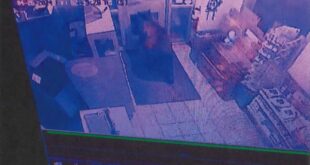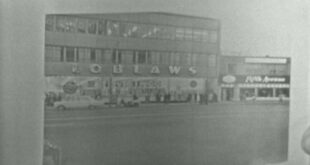Beaulieu sculpture that was well-received in Charlottetown raises eyebrows in Ottawa.

Gerald Beaulieu accepts that his art makes some people uncomfortable. For an artist, it comes with the territory.
Consider his piece When Rubber Hits The Road, two large sculptures of “dead” crows made from recycled tires.
It was received positively when it debuted in 2018 at Art in the Open in Charlottetown, a city occasionally besieged by crows. People understood how it literally illustrated the “consequences of our collision with the natural world,” as Beaulieu describes it.
The work has been shown in five provinces since then, and one of the crow pair was purchased by the Beaverbrook Gallery in Fredericton.
The other crow debuted earlier this month in Ottawa — and not everyone has liked it.
“It’s getting the whole range of reactions, [from] people who absolutely adore it to people who also dislike it intensely,” Beaulieu said. “They find it grim. They find it inappropriate.”
The response doesn’t always need to be just cheers and approval. I think discomfort is also something perfectly valid. — Pan Wendt
That’s not necessarily a bad thing, says Pan Wendt, the curator of the Confederation Centre Art Gallery in Charlottetown.
Anticipating how people will react to a piece of art is a major factor in determining whether he thinks it would work as an exhibition. And that doesn’t mean people have get a warm, fuzzy feeling from it.

“The response doesn’t always need to be just cheers and approval. I think discomfort is also something perfectly valid,” he said.
“So even if sometimes the reaction is negative, you then you kind of have to ask them why. Why are we so bothered by this work of art? What’s causing our discomfort?”
‘Uncomfortable about the message’
Beaulieu has some theories about reaction to the crow sculpture.

“Some of the negative comments speak to the fact that people might be uncomfortable about the message of the work. You know, in confronting the climate crisis … it leaves all of us a bit uncomfortable because we know that some of our habits are contributing to this and that the change isn’t easy.
“So I think there’s a lot of that.”
It was also made public that the National Capital Commission, a federal Crown corporation, paid $14,022 to display the crow for a year, which may have given some people a reason to criticize government spending without appreciating the art on its own merit.
P.E.I. multidisciplinary artist Monica Lacey called the crow statue “brilliant,” saying it shows Beaulieu’s “mastery of materials.” But she said it might not have the same context in Ottawa that it had in Charlottetown.
“There’s a lot of relationship with crows already, and I think if you didn’t have that, it would be easy to see it differently.”
In one door and out the other
Lacey knows first-hand that not everyone interprets a piece of art the way the artist had intended. She recalled a piece she did for Art in the Open, a building the size of a toll booth with four different doors, one on each side.
“I had originally kind of imagined that people would move in a really sort of slow, thoughtful way with it, and they would go in one door and out the other door and it would be like a more meditative piece. That was sort of my intention with it,” she said.
“And it turned into, like, kind of a party space. People were just, like, running through it. Kids were running through it. Like it turned into this really playful party space, which wasn’t the energy that I had infused it with when I was making it, but it was a really delightful surprise.”
Lacey considers sharing her work to be part of the creation process.
“To me it’s not totally finished until you share it. And then when you share it, you have to release it… You can’t have those attachments to whether people like it or how they interpret it.”
Familiarity breeds acceptance?
Beaulieu said he doesn’t “dial it down for people’s comfort” when his art exposes what he calls “hard truths.”
But he hopes the more times people in Ottawa see the crow sculpture, the more they will come to appreciate it. Being on display 24/7 is one of the advantages of public art, he said.
“I imagine there might be people who are shocked at first glance, but then as they pass by it daily, weekly or monthly, you know, would have a chance to see the layers of complexity and the subtleties you might miss on first glance.”
ABOUT THE AUTHOR
Shane Ross is a journalist with CBC News on Prince Edward Island. Previously, he worked as a newspaper reporter and editor in Halifax, Ottawa and Charlottetown. You can reach him at shane.ross@cbc.ca.
*****
Credit belongs to : www.cbc.ca
 Atin Ito First Filipino Community Newspaper in Ontario
Atin Ito First Filipino Community Newspaper in Ontario






